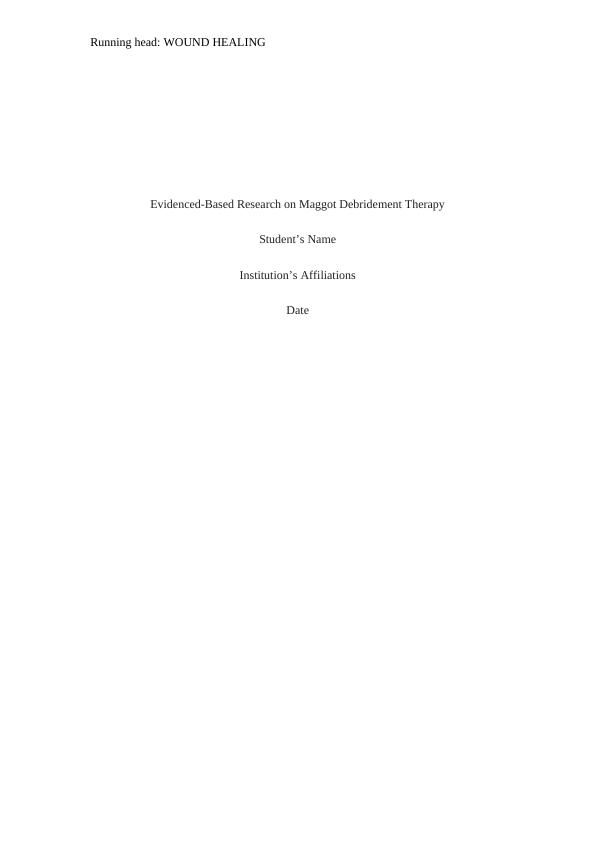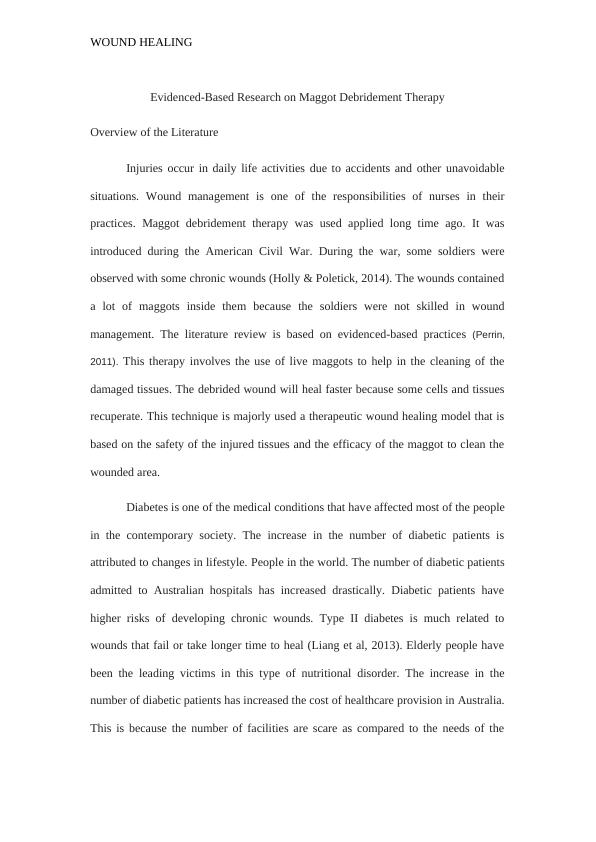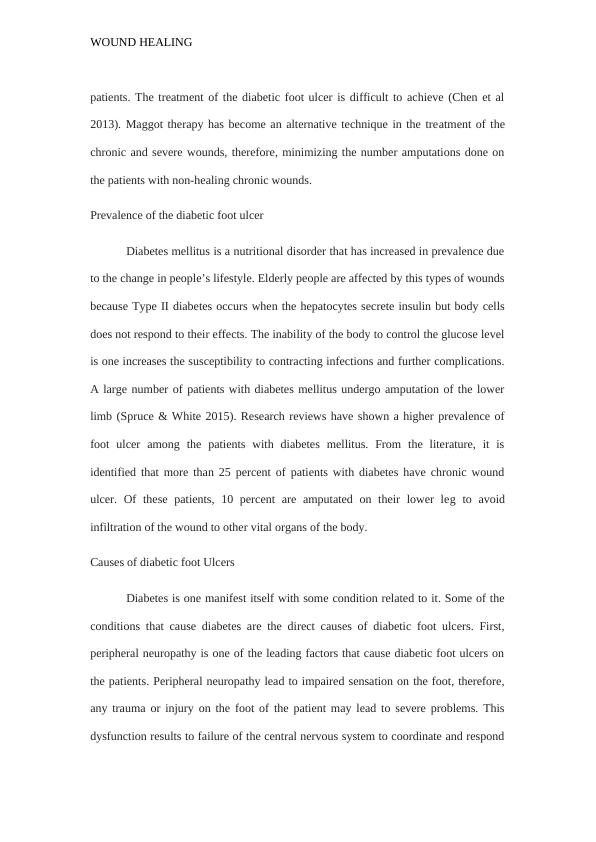Evidenced-Based Research on Maggot Debridement Therapy
This assignment is part of the NURS20027 Evidence for Nursing Practice course at Avondale University. It is an essay and text-based assignment worth 55% of the final grade. The assignment requires students to demonstrate their understanding of evidence-based nursing practice.
12 Pages3058 Words119 Views
Added on 2023-04-21
About This Document
This article provides an overview of the literature on evidenced-based research on maggot debridement therapy for wound healing. It discusses the use of live maggots to clean damaged tissues and promote faster healing. The article also explores the prevalence and causes of diabetic foot ulcers, as well as the complications and efficacy of maggot therapy in their treatment. The research review includes analysis of peer-reviewed articles and their findings on the effectiveness of maggot debridement therapy. The strengths and weaknesses of this therapy are also discussed.
Evidenced-Based Research on Maggot Debridement Therapy
This assignment is part of the NURS20027 Evidence for Nursing Practice course at Avondale University. It is an essay and text-based assignment worth 55% of the final grade. The assignment requires students to demonstrate their understanding of evidence-based nursing practice.
Added on 2023-04-21
ShareRelated Documents
End of preview
Want to access all the pages? Upload your documents or become a member.
Maggot Debridement Therapy
|10
|3053
|280
Evidence-Based Care on Diabetic Foot Ulcers
|9
|2226
|342
Wound Management: Assessment, Evaluation, Healing, Factors, and Pain Management
|7
|2066
|275
Diabetic Wound Care Assignment
|15
|3567
|69
Principles of Wound Management in the Clinical Environment
|13
|4152
|1
Macrovascular and Microvascular Disease in Diabetic Foot In Angiography
|11
|2897
|424




